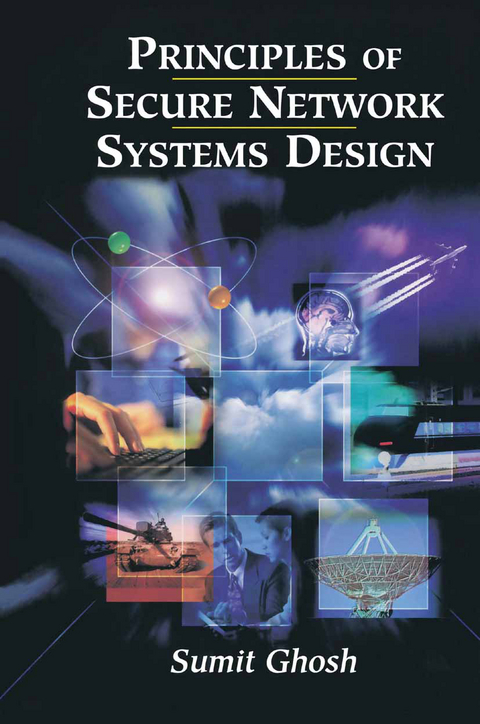
Principles of Secure Network Systems Design
Springer-Verlag New York Inc.
978-1-4612-6538-2 (ISBN)
1 Evolution of Network Security and Lessons Learned from History.- 1.1 Introduction.- 1.2 History of Security and Its Influence on Information Networks.- 1.3 Lessons Learned from History.- 1.4 Growing Interest in Network Security.- 1.5 Origin and Nature of Security in Networks.- 1.6 Principal Characteristics of Network Security.- 1.7 Secure Network Designs Through Modeling and Simulation.- 1.8 Problems and Exercises.- 2 A Fundamental Framework for Network Security.- 2.1 Introduction.- 2.2 The Changing Paradigm of Network Security.- 2.3 Review of the Literature on Network Security.- 2.4 The National Security Agency’s Network Rating Model (NRM).- 2.5 A Fundamental Framework for Network Security.- 2.6 Uses of the Fundamental Framework for Network Security.- 2.7 Problems and Exercises.- 3 User-Level Security on Demand in ATM Networks: A New Paradigm.- 3.1 Review of the Literature on Security in ATM Networks.- 3.2 The Need for User-Level Security on Demand.- 3.3 Security on Demand in ATM Networks.- 3.4 Problems and Exercises.- 4 The Concept of Node Status Indicator (NSI) and Performance Analysis.- 4.1 Introduction.- 4.2 The Concept of Node Status Indicator (NSI): Refinind Distributed Resource Allocation.- 4.3 Modeling Security on Demand for a Representative ATM Network and Implementation Issues.- 4.4 Synthesis of the Input Traffic for Network Performance Analysis Under Security on Demand.- 4.5 The Design of Experiments, Simulation Results, and Performance Analysis.- 4.6 Problems and Exercises.- 5 “Mixed-Use” Network.- 5.1 Introduction.- 5.2 Mixed-use Networks: Integrating the Military’s Secure ATM Networks with the Public ATM Infrastructure.- 5.3 Modeling and Distributed Simulation of the Representative ATM Networks.- 5.4 Call Setup in a Mixed-Use ATM Network.- 5.5Modeling the Represent ative ATM Networks.- 5.6 Simulation Experiments and Performance Analysis.- 5.7 Problems and Exercises.- 6 Synthesis of Security Attack Models for ATM Networks.- 6.1 Brief Review of the Current Literature on Attack Models.- 6.2 Fundamental Characteristics of ATM Networks.- 6.3 Synthesis of Security Attack Models for ATM Networks.- 6.4 Modeling, Simulation, and Behavior Analysis of Security Attack Models.- 6.5 Problems and Exercises.- 7 Complex Vulnerabilities and Highly Sophisticated Attacks.- 7.1 Influence of Source Traffic Distribution on Quality of Service.- 7.2 Susceptability of the Traditional ATM Output Buffer Architecture to UNI-Compliant Traffic.- 7.3 Problems and Exercises.- 8 Future Issues in Information Systems Security.- References.
| Vorwort | H. Lawson |
|---|---|
| Zusatzinfo | XXVI, 209 p. |
| Verlagsort | New York, NY |
| Sprache | englisch |
| Maße | 155 x 235 mm |
| Themenwelt | Informatik ► Netzwerke ► Sicherheit / Firewall |
| Informatik ► Theorie / Studium ► Kryptologie | |
| Mathematik / Informatik ► Mathematik ► Analysis | |
| Mathematik / Informatik ► Mathematik ► Arithmetik / Zahlentheorie | |
| Mathematik / Informatik ► Mathematik ► Wahrscheinlichkeit / Kombinatorik | |
| ISBN-10 | 1-4612-6538-X / 146126538X |
| ISBN-13 | 978-1-4612-6538-2 / 9781461265382 |
| Zustand | Neuware |
| Haben Sie eine Frage zum Produkt? |
aus dem Bereich


